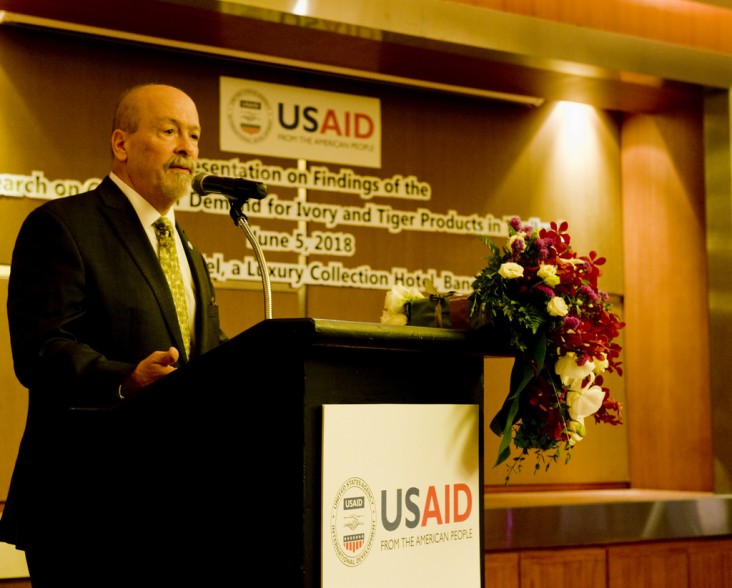Speeches Shim

I would like to welcome all of you this morning for what we hope will be a very informative briefing on wildlife consumption in Thailand – “What drives someone to purchase ivory and tiger products?” Today, we will gain insights into the motivation behind wildlife consumption, as well as the barriers to changing related consumer behavior.
I am grateful to be part of today’s event, as wildlife trafficking is an important issue to me personally. I served as the Director of USAID’s East Africa regional Mission in Nairobi a few years back, and saw first-hand the real cost associated with wildlife crime. This includes: rangers that put their lives at risk and are all too often killed by poachers – it includes young elephants dependent on years of protective captivity to survive when their parents and matriarchs are killed for their tusks – it includes struggling communities that depend on wildlife conservation and tourism to feed their families – and of course, it includes the senseless slaughter of magnificent animals.
I also understand how complex and far reaching the supply chain is — demand across Asia continues to fuel these deplorable outcomes as far away as Kenya and Tanzania. Due to its strategic location in Southeast Asia, Thailand is one of the major transit hubs for illegal wildlife products coming from Africa.
Yet, elephants are a national symbol and source of pride in Thailand. And although the Thai government has made significant progress in protecting these majestic animals, demand for ivory continues.
Similarly, demand for tiger parts and products still exists in Thailand. They are sold in amulet and traditional medicine shops and in temples -- sources that arguably create a false perception of acceptability among consumers.
With an estimated value of 23 billion dollars each year, illegal wildlife crime is the fourth most lucrative global crime in the world after drugs, human trafficking, and weapons’ sales.
Poaching and illegal trade of wildlife and wildlife products have far-reaching economic and ecological consequences that in many countries undermine decades of development gains – threatening global security, the rule of law, and efforts to end extreme poverty.
That is why countering this type of trans-national crime remains an international priority. Specific to the U.S. Government, our work is also guided by the Eliminate, Neutralize and Disrupt Wildlife Trafficking Act of 2016. This law embodies a whole-of-government approach to disrupting the ability of terrorists and criminal organizations to profit from wildlife trafficking.
For over a decade, USAID has been working to combat wildlife trafficking in Asia. Our current project, the USAID Wildlife Asia activity, builds on past efforts, employing new strategies and integrated approaches to tackle this issue.
Social and behavior change communication, or SBCC, is a continuation of this evolving effort. SBCC uses applied research on consumer knowledge, attitudes and beliefs to inform strategies for changing social norms – in this case, norms that allow people to rationalize the buying and selling of illegal wildlife parts and products.
Previous efforts to reduce consumer demand focused on raising awareness of the general public, which failed to significantly reduce demand.
But with the SBCC approach, we can target a small, defined segment of the population – the people that actually buy or plan to buy illegal wildlife products.
The research findings presented today include perceptions, beliefs, sources of beliefs, and other factors that drive the desire for ivory and tiger parts and products in Thailand. We hope to ultimately develop more effective demand-reduction campaigns based on these findings.
I hope the research presented today will provide you with deeper insights and a better understanding of consumer motivation and behavior, and I encourage you to share your feedback -- and your ideas on how best to apply this information to ensure the survival of these incredible animals for generations to come.
Thank you for being here today.

Comment
Make a general inquiry or suggest an improvement.